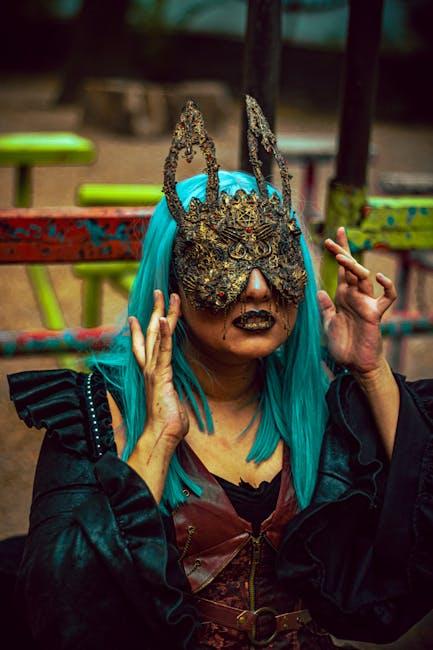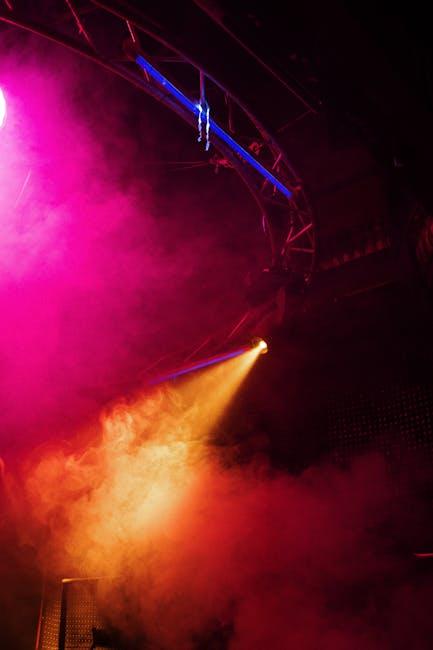In recent years, the fantasy genre has witnessed a remarkable resurgence in popular media, captivating audiences with its sprawling worlds and mythical creatures. At the forefront of this resurgence is the pervasive use of computer-generated imagery (CGI), a tool that has transformed the visual storytelling landscape. However, as CGI becomes increasingly sophisticated and accessible, a debate has emerged within the industry and among fans: are fantasy shows leaning too heavily on visual spectacle at the expense of compelling storytelling? This article seeks to explore this question by examining the balance between CGI and narrative depth in contemporary fantasy series. By analyzing key examples and industry trends, we aim to understand whether the allure of digital wizardry is overshadowing the fundamental elements of storytelling that have traditionally drawn viewers into fantastical realms.
Balancing Visual Spectacle with Narrative Depth
In the quest to captivate audiences, fantasy shows often find themselves walking a tightrope between breathtaking visuals and a compelling storyline. The allure of computer-generated imagery (CGI) is undeniable, offering creators the ability to craft fantastical worlds and awe-inspiring creatures that were once confined to the pages of novels. However, as CGI technology advances, there is a growing concern that some productions may prioritize visual spectacle at the expense of narrative depth. This can lead to a scenario where the storyline becomes secondary, potentially leaving viewers with a visually stunning yet emotionally hollow experience.
Key elements that contribute to a well-balanced fantasy series include:
- Character Development: Characters with rich backstories and complex motivations can anchor even the most visually ambitious tales.
- Engaging Plotlines: A well-crafted plot can provide the necessary framework to support and enhance visual elements, rather than being overshadowed by them.
- Thematic Depth: Exploring profound themes can add layers of meaning to a series, encouraging viewers to engage more deeply with the narrative.
Ultimately, the most memorable fantasy shows are those that skillfully blend visual artistry with storytelling, ensuring that neither element outshines the other but instead works in harmony to create a truly immersive experience.

The Role of CGI in Enhancing Fantasy Worlds
In the realm of fantasy shows, CGI has become an indispensable tool, transforming the impossible into a visual reality. This technology allows creators to craft intricate worlds with unprecedented detail and scale, from sprawling landscapes to fantastical creatures. CGI serves several critical functions in fantasy storytelling, including:
- World-building: Enabling the creation of entire realms that defy the constraints of physical sets.
- Character Design: Bringing mythical beings to life with movements and appearances that would be impossible with practical effects alone.
- Visual Effects: Enhancing magical elements and epic battles that capture the viewer’s imagination.
However, the allure of CGI can sometimes overshadow narrative depth. While it provides the visual spectacle that captivates audiences, there’s a growing concern that an over-reliance on digital effects might detract from the storytelling itself. A balanced integration of CGI and narrative is essential to maintain the essence of fantasy, ensuring that the heart of the story remains at the forefront, supported—not overwhelmed—by its visual splendor.

Evaluating Audience Expectations and Engagement
Understanding what viewers anticipate when they tune into a fantasy show is pivotal in dissecting the balance between CGI and storytelling. Audience expectations often revolve around a rich narrative tapestry, where compelling characters and intricate plots take precedence. However, there’s also a desire for the visual spectacle that CGI can deliver. This raises the question: are audiences satisfied with a visually stunning show if it lacks depth in storytelling?
Engagement levels can offer insights into this balance. Some key aspects to consider include:
- Viewer Feedback: Are audiences expressing dissatisfaction with the storytelling, or is the CGI being praised?
- Social Media Discussions: Is the conversation dominated by plot discussions or visual effects?
- Viewership Trends: Are shows with a stronger narrative seeing higher engagement despite less CGI?
By evaluating these elements, content creators can better gauge whether the current trajectory aligns with audience desires or if a recalibration towards storytelling is needed.

Strategies for Integrating CGI with Strong Storytelling
Incorporating CGI into fantasy shows can enhance the visual experience, but it’s crucial to strike a balance to ensure that the narrative remains engaging. One effective strategy is to use CGI as a tool to support and enhance the storytelling rather than overshadow it. By doing so, creators can craft a seamless blend of technology and narrative that captivates the audience. Here are some strategies to achieve this balance:
- Character-Driven Effects: Ensure that CGI elements are directly tied to character development or plot progression. This approach keeps the focus on the story while using visuals to deepen the audience’s understanding of characters and their journeys.
- World-Building with Purpose: Use CGI to construct worlds that complement the narrative rather than dominate it. The digital landscapes should serve as a backdrop that enhances the story’s themes and mood, not as a distraction from the plot.
- Selective Spectacle: Reserve high-impact CGI moments for key plot points. This selective use creates a sense of awe and emphasizes pivotal story events, making them more memorable without overwhelming the audience with constant visual stimuli.
By integrating these strategies, creators can ensure that CGI serves as an ally in storytelling, enriching the viewer’s experience without compromising the narrative’s integrity.
Key Takeaways
the interplay between CGI and storytelling in fantasy shows presents a complex dynamic that continues to evolve. While computer-generated imagery offers unparalleled opportunities to create visually stunning worlds and bring fantastical elements to life, it is crucial that it complements rather than overshadows the narrative core. A balanced approach, where CGI enhances rather than dictates the storyline, can lead to a more enriching viewer experience. As audiences become increasingly discerning, the future success of fantasy shows may well depend on their ability to weave compelling stories that resonate on an emotional level, supported by, but not reliant on, technological advancements. As creators navigate this landscape, the challenge remains to ensure that the magic of storytelling retains its primacy, even amidst the dazzling allure of CGI.







































